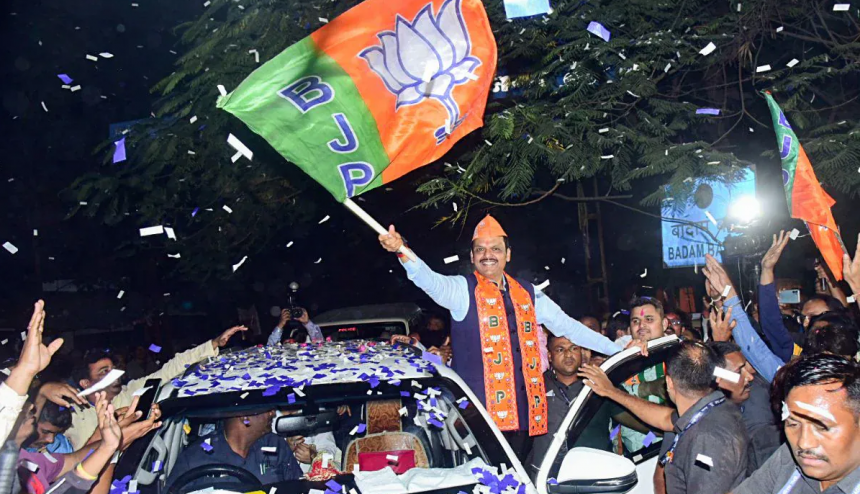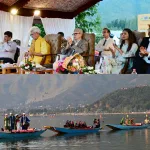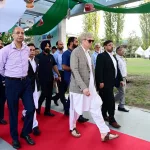In the political theatre of Maharashtra, the Bharatiya Janata Party’s (BJP) recent success cannot be fully understood without acknowledging the significant role played by the Rashtriya Swayamsevak Sangh (RSS), Prime Minister Narendra Modi’s leadership, and the party’s innovative welfare schemes, such as the Ladli Behna Yojana. These elements, though often operating behind the scenes, were instrumental in propelling the BJP to yet another electoral victory, solidifying its position as the dominant force in the state. The party’s win was not merely a result of traditional political maneuvering but of a nuanced and multi-faceted strategy that combined ideological influence, welfare initiatives, and a keen understanding of the state’s socio-political landscape.
The RSS, the ideological parent of the BJP, has long been a powerful force in shaping the party’s political trajectory. While its formal role in electoral campaigns may be indirect, the ideological and organizational support it provides to the BJP has been crucial. The RSS has been instrumental in helping the BJP connect with grassroots organizations and the common people. Over decades, the RSS has cultivated a deep network of volunteers and affiliates who have worked relentlessly at the ground level, establishing a robust organizational presence that the BJP has leveraged to its advantage. In Maharashtra, this network was particularly effective in mobilizing voters, ensuring a strong BJP presence in both rural and urban constituencies.
One of the most striking features of the RSS’s contribution to the BJP’s success is the propagation of the party’s ideological message. The RSS, with its emphasis on nationalism, cultural pride, and Hindutva, has helped the BJP position itself as the protector of Indian traditions and values. In a state like Maharashtra, where cultural identity and pride play an important role in electoral decisions, this messaging resonated with a large segment of voters. The BJP, with its links to the RSS, has been able to project itself as the true representative of Maharashtra’s socio-cultural fabric, combining regional pride with nationalistic fervor. This dual identity has helped the BJP forge a broad coalition of voters, from the urban middle class to rural constituencies, all of whom feel aligned with the party’s vision.
Beyond ideology, the RSS also played a significant role in the organizational aspects of the BJP’s campaign. The RSS has a well-oiled machinery for voter outreach and election management. This network extends down to the smallest villages, where local RSS-affiliated organizations help ensure voter turnout, coordinate rallies, and spread the BJP’s message. The party’s vast grassroots apparatus helped BJP connect with voters, particularly in rural Maharashtra, where traditional loyalties and vote banks can be swayed through personal connections and local influence. This grassroots strength provided the BJP with a distinct advantage over the Congress, which, despite its historical presence in the state, lacked the same level of organizational depth.
While the RSS played a foundational role in the BJP’s success, another crucial factor was the leadership of Prime Minister Narendra Modi. Modi’s charisma and image as a decisive, strong leader resonated deeply with the electorate, especially in a state like Maharashtra, where voters often seek stability and direction. PM Modi’s national appeal and his reputation as a leader capable of delivering both economic growth and social justice contributed significantly to the BJP’s victory. His leadership helped cement the BJP’s position as a party of governance, capable of addressing both state-specific issues and national challenges.
Additionally, the role of local leadership, particularly Maharashtra Chief Minister Eknath Shinde, cannot be underestimated. Shinde, who rose to prominence during the political crisis surrounding the Shiv Sena split, emerged as a figure who connected with local voters. His leadership provided stability to the party in the state and helped steer the BJP through a tumultuous political landscape. Shinde’s strong connection to Maharashtra’s issues, combined with his image as a leader who understood the needs of the people, reinforced the BJP’s position as a party rooted in local realities while maintaining the national vision set by PM Modi.
However, the BJP’s victory was not only a result of ideological and organizational prowess. The party’s welfare schemes, especially the Ladli Behna Yojana, played an equally significant role in helping the BJP win over key sections of the electorate, particularly women and the marginalized. Launched as part of the BJP’s promise to focus on social justice and welfare, the Ladli Behna Yojana aimed to empower women, especially those from economically disadvantaged backgrounds, by providing direct financial assistance. This scheme sought to address the immediate economic concerns of women, offering them a sense of security and financial independence.
In Maharashtra, where women make up a significant portion of the electorate, the Ladli Behna Yojana struck a chord with many. It resonated especially with rural women, who often face significant socio-economic challenges and are sometimes excluded from the benefits of broader economic policies. By focusing on women’s welfare, the BJP was able to gain the trust of a demographic that had been historically neglected by many political parties. Women, particularly in rural Maharashtra, are often the decision-makers when it comes to household voting preferences. The Ladli Behna Yojana gave them a tangible benefit that directly impacted their lives, leading to increased support for the BJP.
Moreover, the welfare initiative served as a direct counter to the Congress’s traditional emphasis on caste-based politics and identity-based schemes. While the Congress pushed for a caste census and other identity-based measures, the BJP focused on universal welfare schemes that benefited all sections of society, particularly those who felt marginalized. The party’s emphasis on gender empowerment through the Ladli Behna Yojana not only gave it an edge among women voters but also positioned the BJP as a party that delivered real, measurable benefits to the people.
In addition to Ladli Behna Yojana, the BJP’s other welfare schemes, such as the Pradhan Mantri Awas Yojana, PM Kisan Samman Nidhi, and various health initiatives, also helped it maintain a positive image among the electorate. These schemes, which have provided housing, financial aid to farmers, and improved healthcare facilities, were particularly popular in rural Maharashtra. The BJP’s focus on tangible benefits, as opposed to abstract promises, helped the party secure the support of economically vulnerable sections of the population. While Congress raised alarms about constitutional threats and the need for a caste-based census, the BJP gave voters something more immediate—a promise of economic upliftment and security.
The Ladli Behna Yojana in particular became a powerful tool for the BJP to build a loyal constituency among women voters. It showcased the party’s commitment to social justice in a way that was both pragmatic and effective. For many women in Maharashtra, this scheme was not just about financial support; it was about feeling acknowledged and empowered. In a state where women often face the brunt of socio-economic challenges, the BJP’s initiative provided them with a sense of agency and importance. The emotional appeal of the scheme, coupled with its practical benefits, ensured that it became one of the key drivers of the BJP’s electoral victory.
Another factor contributing to the BJP’s success was its ability to project a stable and strong leadership. The party’s leaders, including Prime Minister Narendra Modi and Maharashtra Chief Minister Eknath Shinde, played a crucial role in shaping the electoral narrative. PM Modi’s charisma, combined with his image as a decisive and strong leader, resonated with voters who wanted stability in the state. Shinde, too, projected an image of a leader who understood the issues of Maharashtra and was capable of delivering on promises. The BJP’s ability to maintain unity within its ranks, despite the political turmoil surrounding the Shiv Sena split, further reinforced its image as a party capable of strong leadership.
While the Congress tried to counter the BJP’s success by raising issues such as the threat to the constitution and the need for a caste-based census, it failed to connect with the electorate in the same way. The Congress’s approach, which relied heavily on identity politics, was increasingly viewed as outdated and disconnected from the real, pressing issues that voters faced. The BJP, on the other hand, presented itself as a party of the future, with a forward-looking agenda centered on economic progress, welfare, and empowerment.
The Congress’s failure to adapt to the changing political dynamics of Maharashtra, combined with its internal divisions and lack of coherent leadership, left it vulnerable to defeat. While the Congress raised concerns about the danger to India’s democratic institutions and the need for affirmative action, the electorate, particularly in Maharashtra, appeared more concerned with concrete issues such as employment, economic stability, and social welfare. This was where the BJP excelled—by framing its agenda around development and social justice, the party was able to secure the trust of the voters, particularly the marginalized sections of society.
In conclusion, the BJP’s victory in Maharashtra was not the result of a single factor, but rather a combination of strategic alliances, effective leadership, and innovative welfare schemes. The RSS, as the ideological backbone of the BJP, provided the organizational strength and ideological direction needed to connect with voters on a deeper level. Meanwhile, Prime Minister Modi’s leadership and the local leadership of Eknath Shinde reinforced the party’s position as a stable and capable force. The Ladli Behna Yojana and other welfare initiatives gave the BJP a strong advantage among women and rural voters.
By focusing on development and empowerment, the BJP was able to position itself as the party that truly cared for the people of Maharashtra. As the political landscape continues to evolve, it is clear that the BJP’s formula of combining ideology, governance, and welfare will remain a potent force in the state for years to come.
(Author is a columnist and can be reached at: [email protected])








